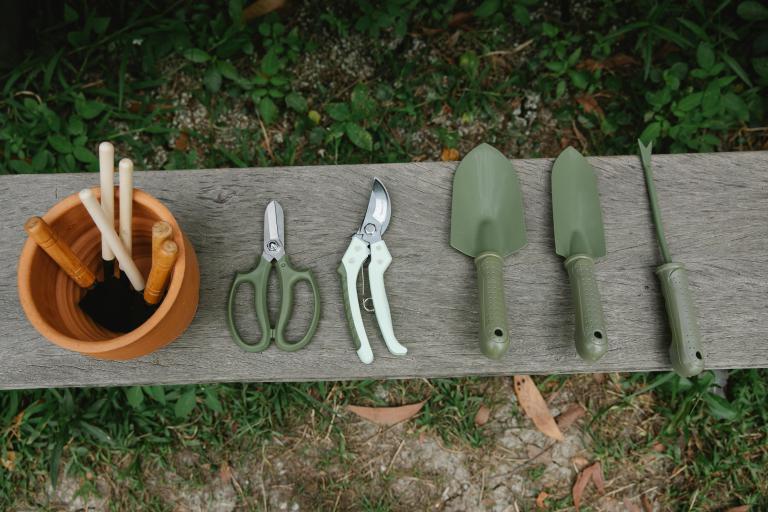Spring is a time of renewal and growth, a season that invites gardeners to embrace the warm sun and vibrant blooms. Whether you're a seasoned horticulturist or a novice planting your very first seeds, these ten essential tips will help you cultivate a thriving garden that bursts with life and flavor. Beyond simple steps, we’ll delve into the “why” behind each recommendation, adding layers of understanding to your gardening journey.
1. Know Your Zone: Understanding Hardiness Zones
Before planting a single seed, it's crucial to know your hardiness zone. This classification zones regions based on their climate, helping you understand which plants will thrive in your locality. For instance, if you're in USDA Zone 5, a plant like the hardy perennial echinacea (coneflower) flourishes, while tender varieties like basil may struggle.
Why It Matters: Knowing your zone ensures that you select plants suited to your local climate, reducing the risk of disappointing failures. It’s about matching your garden plan to the realities of weather patterns—saving you time, effort, and money.
2. Test Your Soil: The Foundation of Health
Your garden’s success starts below the surface. Conducting a soil test can reveal nutrient levels, pH balance, and organic matter. Most home and garden stores offer kits, or you can send samples to local agricultural extensions for a more detailed analysis.
Why It Matters: Healthy plants begin with healthy soil. Knowing whether your soil is sandy, clay-heavy, or rich in loam enables you to amend it appropriately—this translates to better drainage, stronger root systems, and increased nutrient absorption. Imagine planting in an enriched, balanced environment versus struggling with compacted, nutrient-depleted ground.
3. Choose the Right Plants: A Tactical Selection
Consider your garden’s specific microclimates—sunlight exposure, moisture levels, and proximity to wind can all influence plant health. Choose native species and varieties known for their resilience. For example, if you're in a hot, dry area, opt for drought-resistant plants like succulents or lavender.
Why It Matters: Selecting plants that align with your garden conditions reduces maintenance demands and fosters an ecosystem where plants can thrive naturally. A garden tailored to its environment celebrates harmony and minimizes the impact of pests and diseases.
4. Start Small: Avoiding Overwhelm
When embarking on a spring garden, it’s tempting to envision a sprawling paradise filled with every imaginable flower and vegetable. However, starting small can lead to greater success. Focus on one garden bed or a few containers.
Why It Matters: This approach prevents the overwhelming workload that can lead to burnout and disappointment. Mastering a smaller space allows you to experiment, learn from mistakes, and build confidence—imagine the satisfaction of producing a basketful of tomatoes rather than a handful from an overextended plot.
5. Timing is Everything: The Planting Calendar
Spring gardens depend heavily on timing. Each plant species has a specific schedule for sowing, transplanting, and harvesting. Using tools like gardening apps or traditional almanacs can help you stay organized.
Why It Matters: Planting at the right time ensures optimal growth. For example, planting tomatoes too early can expose them to frost, while sowing carrots too late might leave them struggling to mature before summer heat stresses their growth. Think of it as orchestrating a symphony: each note must come in at the perfect moment for the harmony to shine.
6. Invest in Quality Seeds and Plants: The Power of Genetics
When choosing seeds or plants, prioritize quality over quantity. Purchase from reputable nurseries that offer organic or heirloom seeds. These options often yield healthier, more flavorful produce, and they're often bred for stronger disease resistance.
Why It Matters: Quality genetics lead to robust plants that are more competitive against pests and diseases. It’s like selecting championship players for your gardening team—the stronger the players, the better the results!
7. Water Wisely: A Balanced Approach
Watering is both an art and a science. Early mornings or late afternoons are ideal for watering, reducing evaporation and helping your plants absorb moisture effectively. Implementing mulch can also help retain soil moisture and regulate temperature.
Why It Matters: Over-watering can rot roots and lead to disease, while under-watering stresses plants and stunts growth. Proper watering is like providing a balanced diet to your plants—nourishing them properly encourages robust growth and fruiting.
8. Encourage Biodiversity: A Natural Ecosystem
Incorporate a variety of plants in your garden to create a diverse ecosystem. Companion planting—pairing plants that benefit each other, like tomatoes with basil—can deter pests and enhance growth.
Why It Matters: Biodiversity encourages beneficial insects, like pollinators and pest predators. A garden teeming with life not only looks vibrant but thrives naturally, as plants and creatures support one another. Think of it as a supportive community working together for a greater outcome.
9. Embrace Composting: The Circle of Life
Composting is a way to turn kitchen scraps and yard waste into rich, fertile soil. Gather materials like fruit peels, coffee grounds, and dried leaves to create a nutrient-rich compost that can dramatically improve your garden’s soil quality.
Why It Matters: Composting reduces waste while enhancing soil with essential nutrients. It’s nature’s recycling program! Envision the satisfaction of transforming food scraps into black gold, which revitalizes your garden and fosters sustainability.
10. Observe and Adapt: The Gardener’s Mindset
As spring unfolds, take time to observe your garden’s progress. Keep a gardening journal to track growth patterns, pests, and successes. Don’t hesitate to adjust your approach based on what you learn throughout the season.
Why It Matters: Gardening is an evolving art. By being observant, you can make necessary tweaks—early interventions against diseases, or recognizing when to prune for better airflow—that enhance your garden’s productivity. Imagine watching your garden flourish, knowing you’re an active participant in its journey.
Conclusion: A Labor of Love
Successful gardening is not merely a task to check off a list but a rewarding journey that enriches our lives and our surroundings. As you step into your spring garden with these ten essential tips, remember that patience, curiosity, and a desire to learn will help you grow alongside your plants. Embrace each moment and celebrate the small victories, creating not just a garden but a sanctuary of life, color, and joy. Happy gardening!





